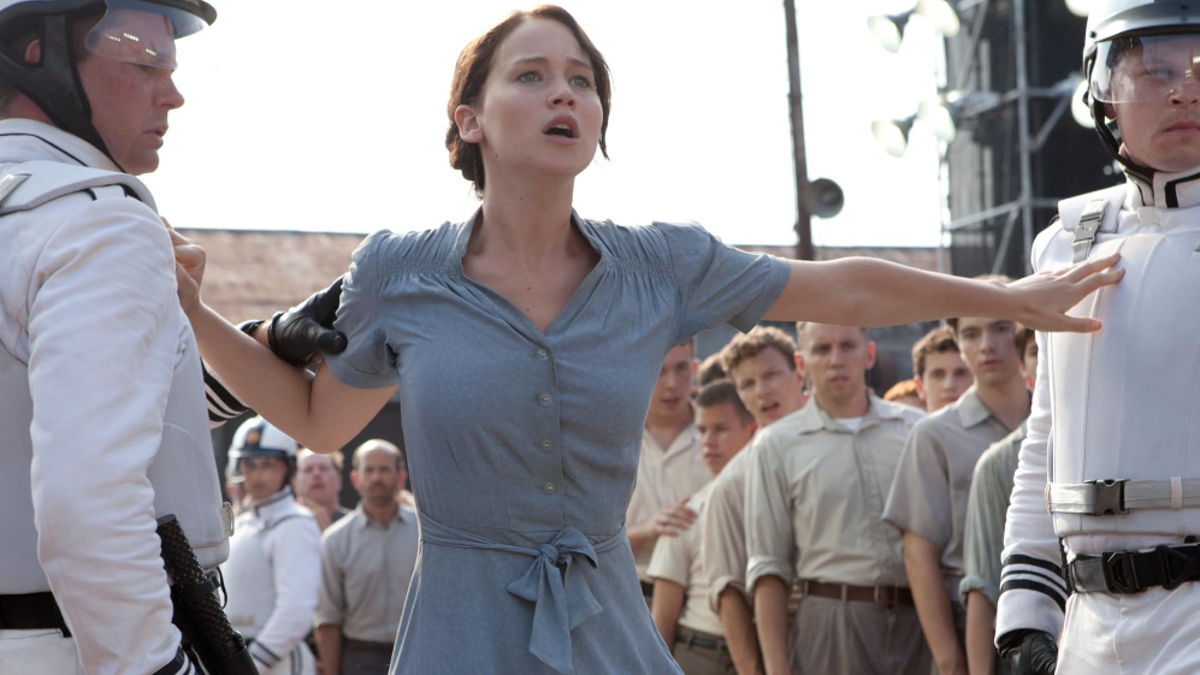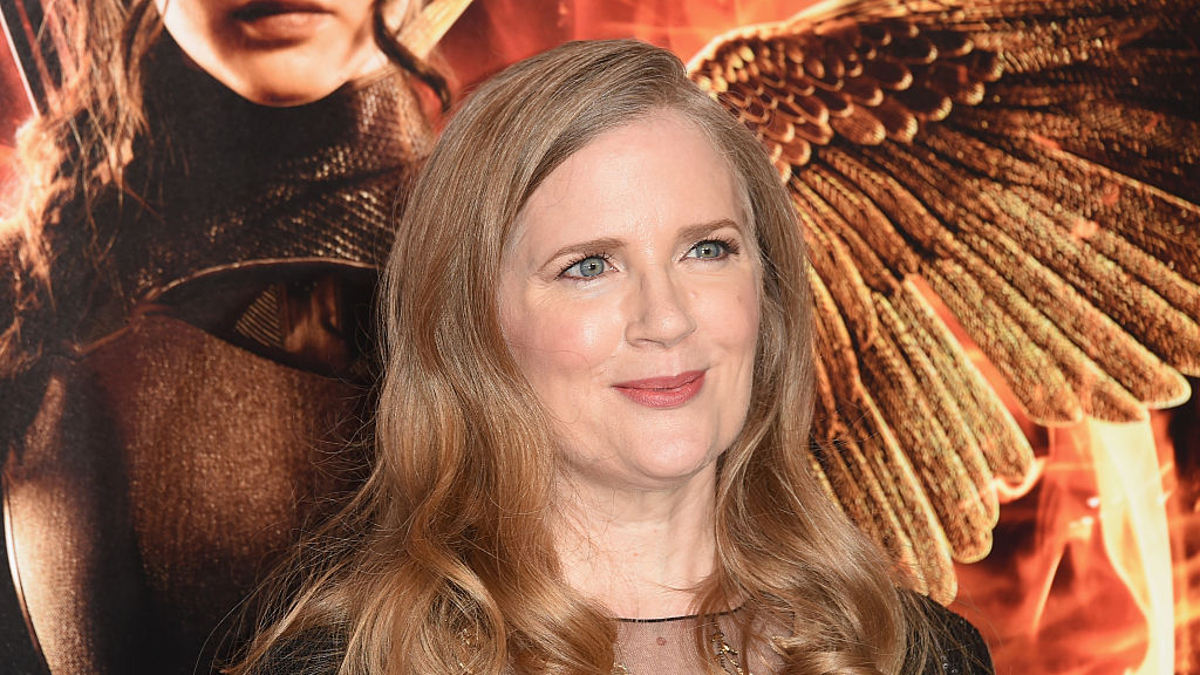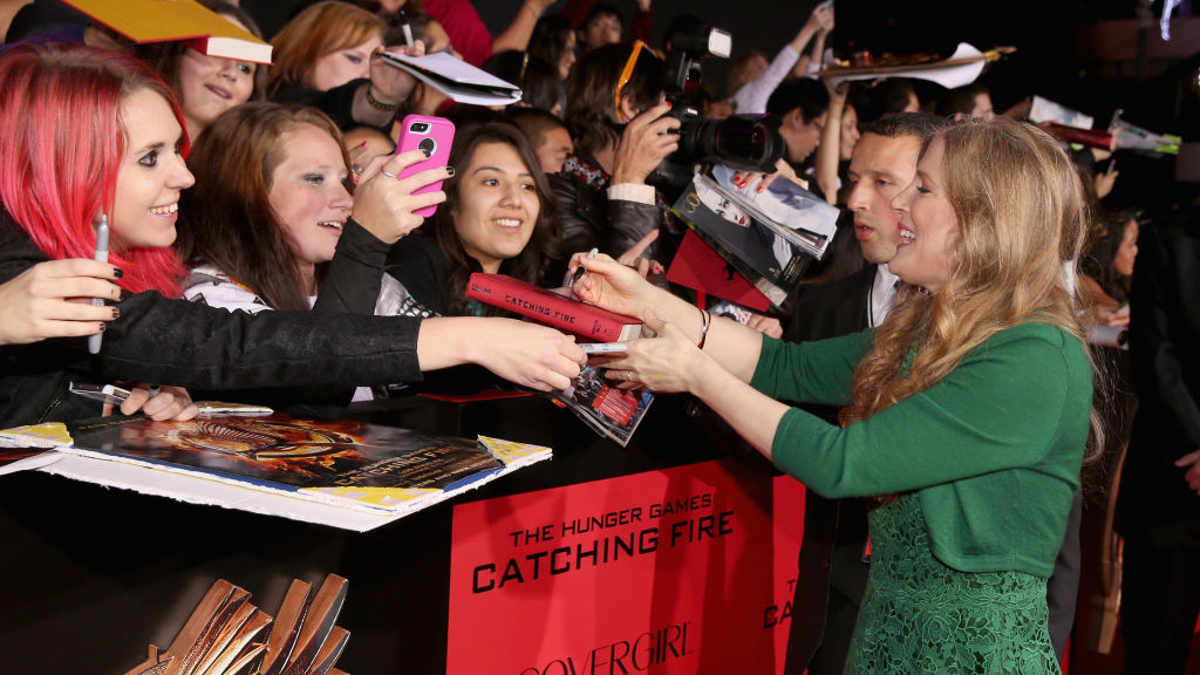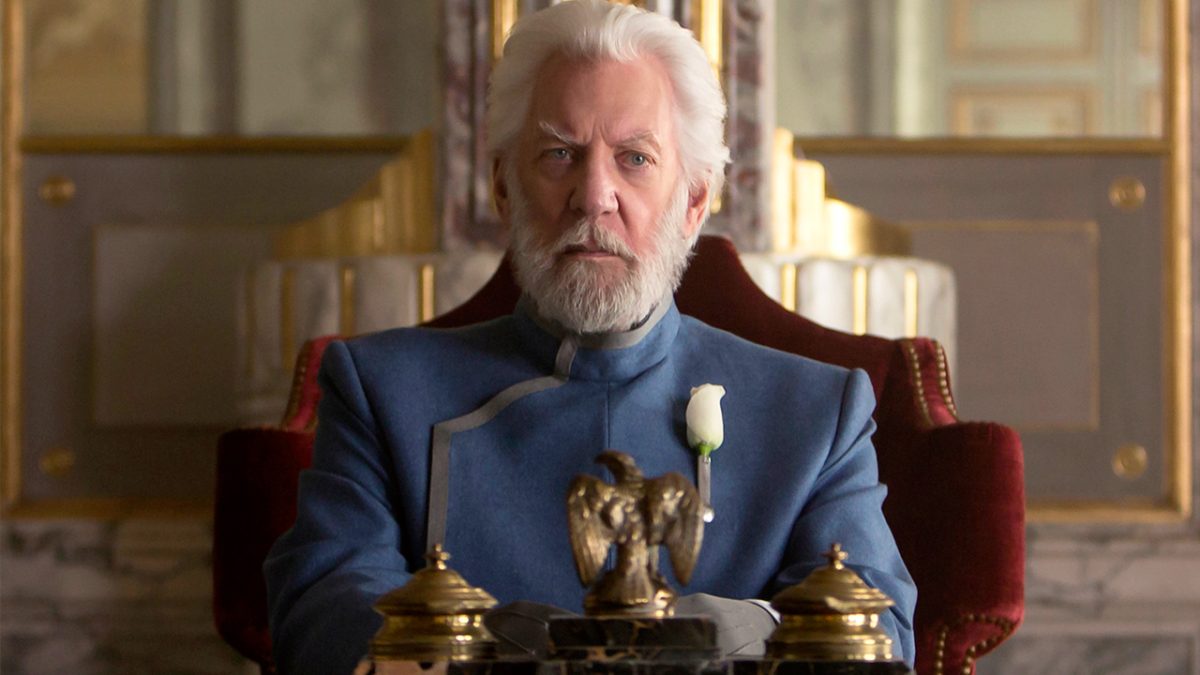When The Hunger Games was released in 2012 it launched star Jennifer Lawrence into the stratosphere. The film series, which will soon encompass five films with the upcoming release of The Hunger Games: The Ballad of Songbirds and Snakes, was a huge box office success, and has even been credited by NPR with a resurgence in interest in archery among young women in the U.S. On a more serious note, the three-fingered gesture used by characters in the novel to represent unity with rebellion was also adopted by protest movements across the globe, specifically in Southeast Asia.
While the films were ultra successful, the book series they are based on wasn’t exactly languishing at the bottom of sales lists before the movies came out. The trilogy was already a pop culture phenomenon, and has consistently made “most influential” lists since it came out, and the first two books made the NYT bestsellers list, with the third (Mockingjay) rocketing straight to the top of the pile. But who wrote The Hunger Games? And what differences, if any, are there between the books and the movies?
What is The Hunger Games about?

The Hunger Games consists of a trilogy of YA dystopian novels and one prequel book, all of which are set in the same universe. The original trio of novels follow Katniss Everdeen (played by Lawrence in the films) and are set in the fictional land of Panem, at an unspecified time in the future. This North American country consists of a wealthy Capitol and 13 other districts, all of which are in differing states of poverty and ruin. Each year, as a punishment for a long-ago rebellion, young people from the first 12 districts are selected via lot and sent to take part in a televised battle royale death match called “The Hunger Games.” The winning child (or “tribute,” as they’re known) earns food and other riches for their people. The 13th district was allegedly bombed after a rebellion many years ago.
In the series, Katniss lives in District 12, which is the poorest region in the country. When her younger sister Primrose is selected as tribute, Katniss decides to take her place and is sent to fight alongside Peeta Mellark from her district, who once saved her from starvation when the pair were children.
When Katniss is told tributes from the same district are allowed to win as a team, she searches for and finds a wounded Peeta and nurses him back to health, soon developing feelings for him. However, when the pair are the only two left, the rulers of the Capitol revoke the “same district” rule, but the two competitors threaten to both kill themselves with poisonous berries. The pair make it out, but the rulers are clearly unhappy, and Peeta and Katniss struggle to reconcile their new relationship with the trauma it was forged under.
The second book begins six months later, and sees rebellion spreading as a result of Katniss and Peeta’s actions. A new game is set by the powers that be, which is given the status of a special edition and pits former winners against each other. However, led by Katniss and Peeta, the tributes destroy the arena and escape instead of competing each other, leading to Katniss discovering the truth about the 13th District and joining the revolution. The third and final book follows Katniss as she fights the rebellion, only to realize that many of the tactics being used by her side are just as oppressive and deadly as those of the Capitol.
A prequel series, set 64 years prior to the original book, and follows a younger version of the series protagonist, President Snow of Panem.
Who wrote The Hunger Games?

The Hunger Games series was written by Suzanne Collins. The AMerican was originally a television writer, working on many popular teen and kids shows like Clarissa Explains It All. She soon became a children’s author, and wrote her first book Gregor the Overlander in 2003. This became the first in The Underland Chronicles series.
The first Hunger Games book was released in 2008, and was immediately a smash hit. Some have claimed the book and series is derivative of the 1999 Japanese horror novel Battle Royale, as well as the 2000 Japanese movie adaptation of the same name. Collins has said she was inspired by her father’s time in the Air Force, and the Greek myth of Theseus and the Minotaur.
What else has Suzanne Collins written?

While there’s no doubt that The Hunger Games series is the most famous and popular work penned by Collins, she has a bibliography that stretches beyond the beloved trilogy and prequel, which also includes the shows she wrote for, most of which were Nickolodeon productions. In terms of books, though, she has written the following:
The Underland Chronicles
- Gregor the Overlander (2003)
- Gregor and the Prophecy of Bane (2004)
- Gregor and the Curse of the Warmbloods (2005)
- Gregor and the Marks of Secret (2006)
- Gregor and the Code of Claw (2007)
The Hunger Games
- The Hunger Games (2008)
- Catching Fire (2009)
- Mockingjay (2010)
- The Ballad of Songbirds and Snakes (Prequel, 2020)
Other books
- Fire Proof: Shelby Woo #11 (Graphic Novel, 1999)
- When Charlie McButton Lost Power (2005)
- Year of the Jungle (2013)

